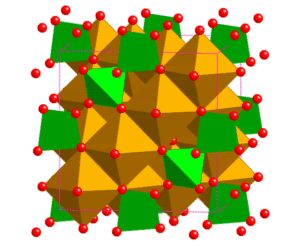Hematite is composed of $\ce{Fe2O3}$, and is paramagnetic, whereas magnetite is $\ce{Fe3O4}$ and is diamagnetic. Magnetite's nature is due to the presence of both $\ce{Fe^{2+}}$ and $\ce{Fe^{3+}}$ (Wikipedia even goes so far as to call it $\ce{FeO}\cdot \ce{Fe2O3}$, but explains that this is not a "solid solution").
I can surmise that in the crystalline solid, there are divalent and trivalent cations dispersed within. I can also assume that there might be some sharing of electrons between the oxygens and each of these cations. One would assume this also happens within the hematite crystal, so what is it about "tossing" the divalent cation into the mix of the crystalline structure that makes the magnetite diamagnetic?
Does the charge differential between the two cations cause a permanent dipole, if so, why don't all of the small dipoles simply cancel each other out?

